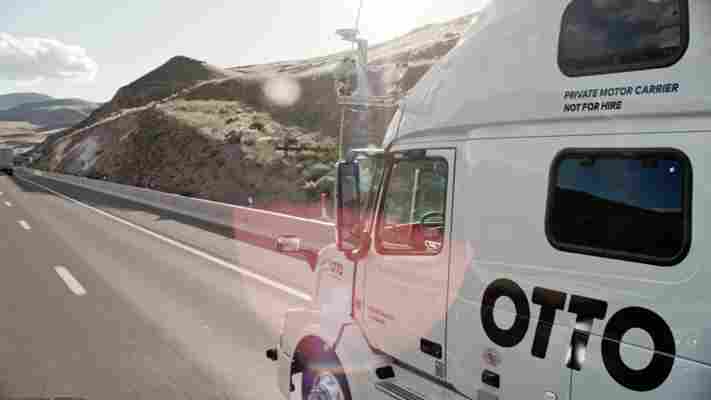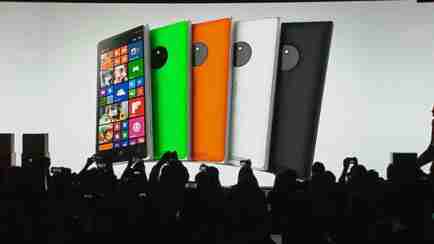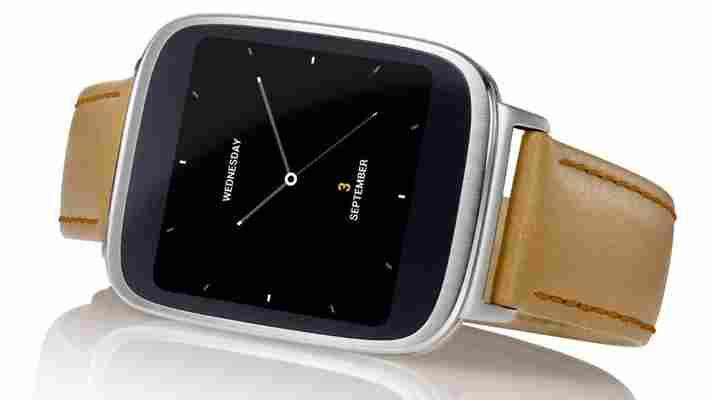While Google , Tesla and BMW race to develop their own autonomous vehicles, a startup created by four ex-Google engineers is inching closer to launching a self-driving kit that can be retrofitted onto any commercial truck.

The idea isn’t to put human drivers out of work. Instead, Otto’s autonomous system augments their ability to cover long distances by kicking in only on freeways, which account for just 5 percent of all roads in the US.
Co-founder Lior Ron, who is a former Google Maps product lead, told Backchannel :
The company is targeting the existing cache of 4.3 million commercial rigs already on American roads today, with its aftermarket kit equipped with lidar, radar and cameras that it hopes to sell for a “small fraction” of the $100,000-$300,000 price of a new tractor cab.
However, Otto still has a long road ahead. The company, which also counts among its co-founders Anthony Levandowski, the engineer who built Google’s very first self-driving car, has demonstrated its tech on a public highway, but hasn’t clocked nearly as many miles with it as Google or Tesla. It’ll also have to convince transportation regulators that its system is safe enough to use.
Otto is yet to announce a timeline for launching its self-driving kit. But according to Ron, that isn’t too far off. “We want to demonstrate a cargo route in the foreseeable future, to show that our technology is commercially viable,” he told Backchannel.
“The approach and the team we put together have the ability to do that very fast,” he added.
Microsoft’s Lumia 830 launched with 10MP PureView camera, Lumia Denim firmware and a focus on value
Microsoft has today unveiled the newest member of its Lumia smartphone family, the Lumia 830, describing it as the first “affordable” Windows Phone flagship device. It’ll arrive costing around €330 in Europe and will start shipping this month.

Software-wise, you’ll find Windows Phone 8.1, Cortana (market applicable) and Microsoft’s usual range of products and services, like Office and OneDrive. Naturally, you’ll find an array of Nokia Camera apps and bespoke features.
On the hardware side, there’s a quad-core 1.2GHz processor, 5-inch display and 10-megapixel camera (capable of capturing 4K video) on the rear. It measures 8.5mm thick and weighs 150 grams. For comparison, the iPhone 5s weighs 112 grams, but has a smaller screen, which explains some of the weight difference.
Unlike some Lumias of the past, the back cover is removable (and supports wireless charging) and has a microSD card slot for adding up to 128GB of additional storage. On board storage is set at 16GB.
Aesthetically, the square-edged device takes more cues from its siblings like the Lumia 930 or 925, rather than the more rounded Lumia 920 or 1020 of the past.
Microsoft also went to pains to point out that the Windows Phone app store now has more than 320,000 apps available to download, including many of the biggest names.
As part of a firmware update called Lumia Denim, the company said it has tweaked some of the camera features, like Nokia Camera, to make it faster to capture and edit a picture. The firmware update will also introduce a new feature for Cortana, its smart assistant, to make it possible to say “Hello, Cortana” to start using it, just like “OK, Google”.
Lumia Denim will also add support for Live Folders, similar to Live Tiles, that contain groups of apps and a built-in consumer VPN feature.
While Cortana is currently restricted to the US, Microsoft confirmed it will be coming to the UK in October.
This firmware update will roll out first to the Lumia 930, 1520 and Icon first (the 830 will ship with Lumia Denim) and will be available for all Windows Phone 8.1 devices in Q4 this year. Microsoft said it would also launch the Lumia Camera App for these devices before the end of the year.
Microsoft also launched a new device to make sharing content to a TV screen easier and a new ‘intelligent’ wireless charger (Smart Wireless Charging Plate) that lights up, which can be customized to alert you to incoming calls, messages, etc. The charger will be available in green, orange or white.
Asus’ first wearable is called the ZenWatch, coming to the UK before Christmas for less than £200
There may well be rumors swirling of a $400 Apple wearable device on the horizon, but Asus today unveiled its first wearable device: the ZenWatch.

Eschewing a circular design, Asus has clearly put time into making the ZenWatch more appealing than some of the other smartwatch efforts that we’ve seen so far. You even get a real leather strap.
On the tech side, the device has a 1.63-inch display and will pair with any phone running Android 4.3 or higher and the company says that it also serves “as a personal wellness manager in conjunction with the ASUS ZenUI Wellness app”.
As you’d expect of a companion smartwatch, the device will show you incoming calls, messages and other notifications. There’s also a range of more advanced functionality like control over the watch face design and Find My Phone, as well as more things like using it as a remote viewfinder for your smartphone’s camera. There are a few features designed to only work with Asus’ own Android phones too.
Asus said the Wellness app works by measuring “relaxation levels”, and then providing tips on how to improve your relaxation score. More normal measurements include tracking things like steps taken, calories burned, activity duration, heart rate and exercise intensity – all of which is tracked directly in the Wellness app.
A spokesperson told TNW that the device would be arriving in the UK before Christmas and would cost “under £199”, but couldn’t confirm availability or pricing for the US or other regions.
